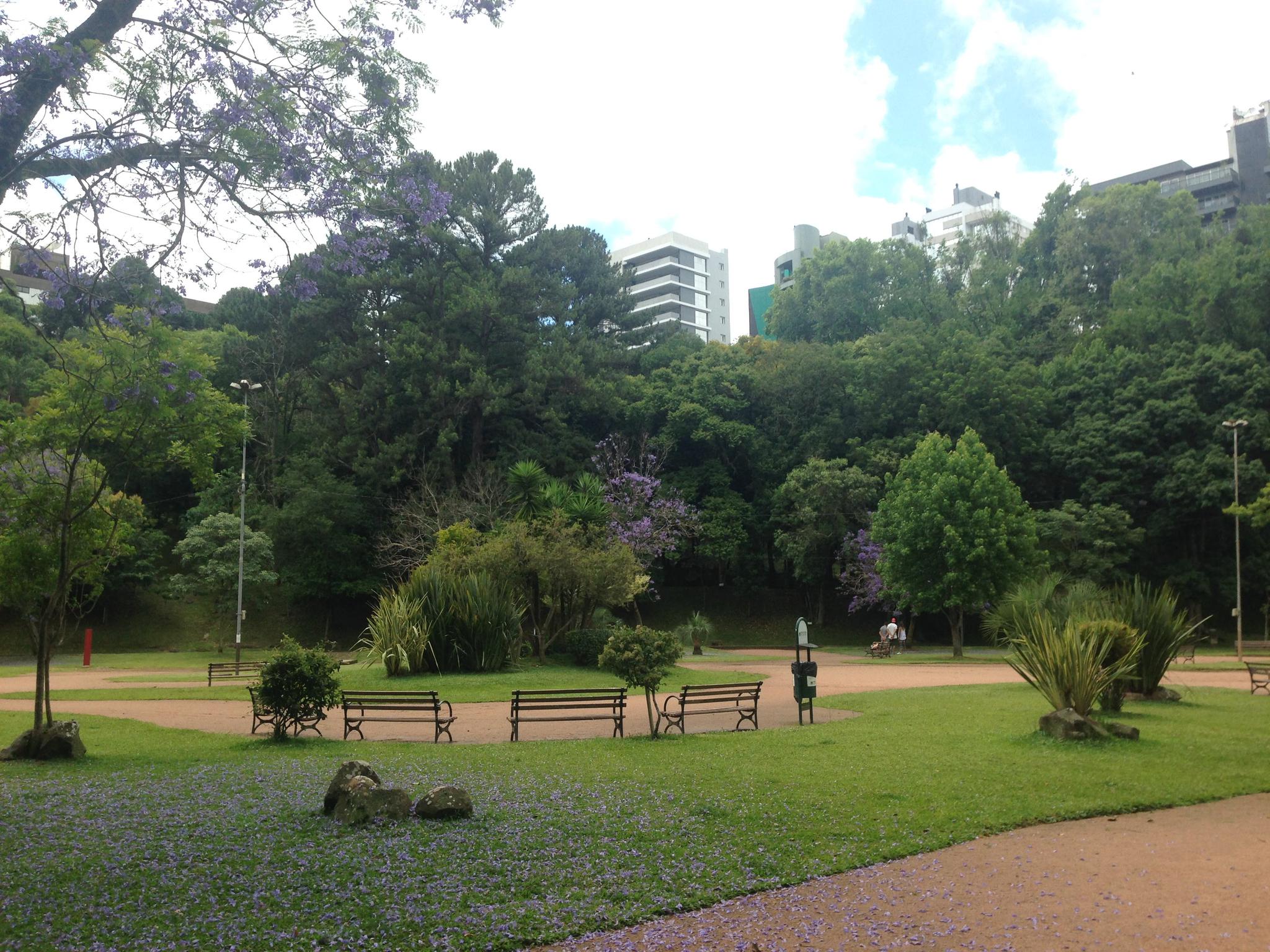The Suspect Looked Brazilian
National, regional, and class identities in Brazil (with a focus on the south)
December 2018
State of Rio Grande do Sul, Brasil
“Lula [the Brazilian ex-president] and the PT are communists. Business investment was down because of them. Now that Bolsonaro will be president soon, businesses are starting to invest more,” says Filipe, a 45 year-old co-owner of a small logistics firm in the southern Brazilian city of Caxias do Sul.
I ask jokingly if Bolsonaro is the savior of Brazil. He does not get the joke and seriously says “Yes!” Filipe is worked up. During our half-day together he rails against “Lula and the communists” repeatedly. He wants his foreign guests to understand why Brazil is troubled and why Brazil will improve.
Caxias do Sul is the home to Marco Polo, a company that makes buses sold around the world. It is a wealthy city with nice parks and clean streets. In the surrounding area, there are large wineries established by the Italian immigrant populations. Filipe is an Italian citizen but has never been to Italy nor does he speak much Italian. I explained to him the difference between northern and southern Italy. This was the first he had heard of this subject. Another Brazilian in Sao Paulo who has an Italian passport laughingly explained that he had to speak English to the Italian immigration officials when he entered Italy.

The People Look Brazilian in Brazil
The Italian government gives citizenship to those who have Italian parents or grandparents. Many Brazilians with Italian ancestry take advantage of this benefit. A possible way out of a country threatened by communists. An alternative national identity as well.
A Brazilian police officer friend Jao worked in the Caxias do Sul area. He told us callers reporting crimes would often describe the suspects as looking very “Brazilian”. The implication is that the callers, likely descendants of Italian immigrants, were not Brazilian despite speaking excellent Brazilian Portuguese. Jao also said that during the World Cup, Italian flags are more commonly displayed than Brazilian flags. In the airport in Caxias, there are signs in Portuguese, Italian, and English. Monica, Filipe’s business partner, brags that the Italian families of Caxias passed down a strong work ethic to their children. I interpret this as an implicit contrast to a weaker “Brazilian” work ethic.
We stop at one of the beautiful wineries. Jaguars and Range Rovers fill the parking lot. A young woman who acts like the manager offers us a tour of the winery as we enter. After hearing an introduction about the winery, I ask her if the winery and her family are Italian. Indeed they are.
After hearing about the different wines and the wine-making processes, we circle back to the bar for wine-tasting. Not a drinker, I pass. Filipe eagerly drinks my cups. Monica is driving us. After a few rounds of tasting, we depart. I notice the maids cleaning the restrooms are black.
An alternative identity to being Brazilian is something many Brazilians search for. Some find it in being “Italian”. Others find it in loving the United States. Monica, Filipe’s business partner, has been to the United States five times on vacation, and tells me, “I absolutely love the United States.” She proudly shows me a tattoo she has of the U.S. flag and eagle on her shoulder. Jao, my police officer friend, is equally enamored. He also has a tattoo of the U.S. flag and eagle on his bicep. He only watches U.S. movies, and says he wanted to join the U.S. Army after 9/11 out of a sense of patriotism for the United States. Jao says he loves the United States more than his own country. One case is a coincidence, two is the start of a pattern, and Jao assures me that there are many in Brazil like him and Monica which make a trend.

It’s Great if You Have Money: Class Over Country
Another common identity in Brazil that competes with and at times supersedes a national consciousness is class. In Santa Maria, also in the state of Rio Grande do Sul in the far south, I attend a private, small-group English class led by Jao’s brother. The two students are 17 and speak excellent English. We discuss various topics, ranging from the recent corruption scandals in Brazil to Brazilian identity. I ask whether the students want to leave Brazil, a common wish of many Brazilians (statistics also show increased emigration recently).
One student Renato, whose father owns a large hospital, says that as long as you have money, Brazil is good. “Why leave?” he asks. I enquire if the students feel the recent prosecution of corrupt politicians and business people — known as “Lava Jato” or “car wash” in English — will positively transform society. They shrug. I follow up by asking if they have a desire to make a better, more honest society. Renato says that he is just concerned about caring for his family. Jorge, the other student, concurs. Jorge adds that while Lava Jato may improve things temporarily, Brazil will still be a very corrupt society in the long-term. Renato wants to be a doctor, Jorge wants to be an engineer.
I then ask if they are proud to be Brazilian. Both said they have no pride in their country, although they did not explicitly say they are ashamed of it either. Perhaps as 17 year olds they do not care about these questions. Or perhaps they are just reflecting their parents’ attitudes. Either way, these future high-earning professionals will look more toward their personal and family duties than those of the society at large. Why help a hopelessly corrupt society?
Jeithino Brasileiro
Many Brazilians I meet, in contrast with many other nationalities in Latin America, appear to have very little pride in their country (this is not universally so, just a general trend I find that is especially pronounced in the south). Igor, a mechanic for LATAM Airlines in the city of São Paulo, told me that he is not at all proud to be Brazilian. He said that Brazilians try and take advantage of each other and always cheat to get ahead. He uses the term“jeithino brasileiro”, which directly translated means “the Brazilian way.” This negative term commonly used by Brazilians to criticize their culture. Igor wants to leave Brazil to work for American Airlines or Delta in the United States.
Jao the police officer concurs. He also references the “jeithino brasileiro” frequently to criticize his countrymen. He says that in addition to taking advantage of each other, all Brazilians just “empurram com a barriga”, or “push with their bellies”. This cultural saying means that all Brazilians do is talk and never take action to improve their society. Jao, like Igor, harbors ambitions to immigrate to the United States, the country he loves more than his own.
The veneration of the United States, expressed by many people I meet in Latin America, seems especially pronounced in Brazil. Some admit life-long fascinations with the culture, a product largely of television and movies. Many express admiration for the rule of law in the United States. Jao’s sister says, “I would happily pay her taxes if she got better services and a more honest government like in the United States.” Monica’s business partner Filipe, the ardent anti-communist, says the same thing. The Trump administration does not seem to have changed the positive image some people hold of the United States.
The North is Full of Communists: Brazilian Regional Identity
Another common alternative identity is regional. Brazil’s far south has historically been wealthier than the rest of the country and far more European. In addition to the Italian descendants, there are many German descendants and towns with German architecture. Many see themselves as distinct from the rest of the nation. Southerners call themselves ‘gauchos’.
The Brazilian barbecue culture — churrasco — originates in the far-south. Jao mentions multiple times that the method of churrasco preparation is so unique that the U.S. Supreme Court ruled that churrasco restaurants in the United States can get special employment visas for their cooks. They are far more than just normal cooks, says Jao. They are well-trained people with a churrasco certificate only obtainable in Rio Grande do Sul, the state furthest south. People also drink mate (the drink ubiquitous Argentina and Uruguay that is a green herb), which they call chimarrao in southern Brazil. Chimarrao is non-existent outside the far-south.
Filipe, the Italian citizen who has not been to Italy, makes a distinction between the south and the northeast. Filipe says the northeast is the poorest part of Brazil and that people there strongly support the ex-president and member of the “communist” Workers’ Party Lula Inacio de Silva. In a disparaging tone, Filipe says he understands why northeasterners like the communists. “Anyone who gets free things without working will like it!” Filipe wishes the far-south would break away from Brazil. There is a small independence movement in the south, although it is far from being anywhere as large as the Catalonian movement in Spain.
Multiple regional identities are a natural result of the size of Brazil. Even in South Korea, a much smaller country, regional identities are strong. However, to complement the regional identity a strong national pride and identity also exist in South Korea. Do the northeast of Brazil, Rio, or São Paulo have a national pride missing in the south? Igor, the LATAM mechanic in São Paulo, certainly does not but he is one person. Are there people who view Brazil positively? These are the questions I ask as we wander through São Paulo and meet many people whose families migrated to the metropolis from the northeast of Brazil in search of a better life.
The names of the people featured in this article were changed to protect their privacy.
